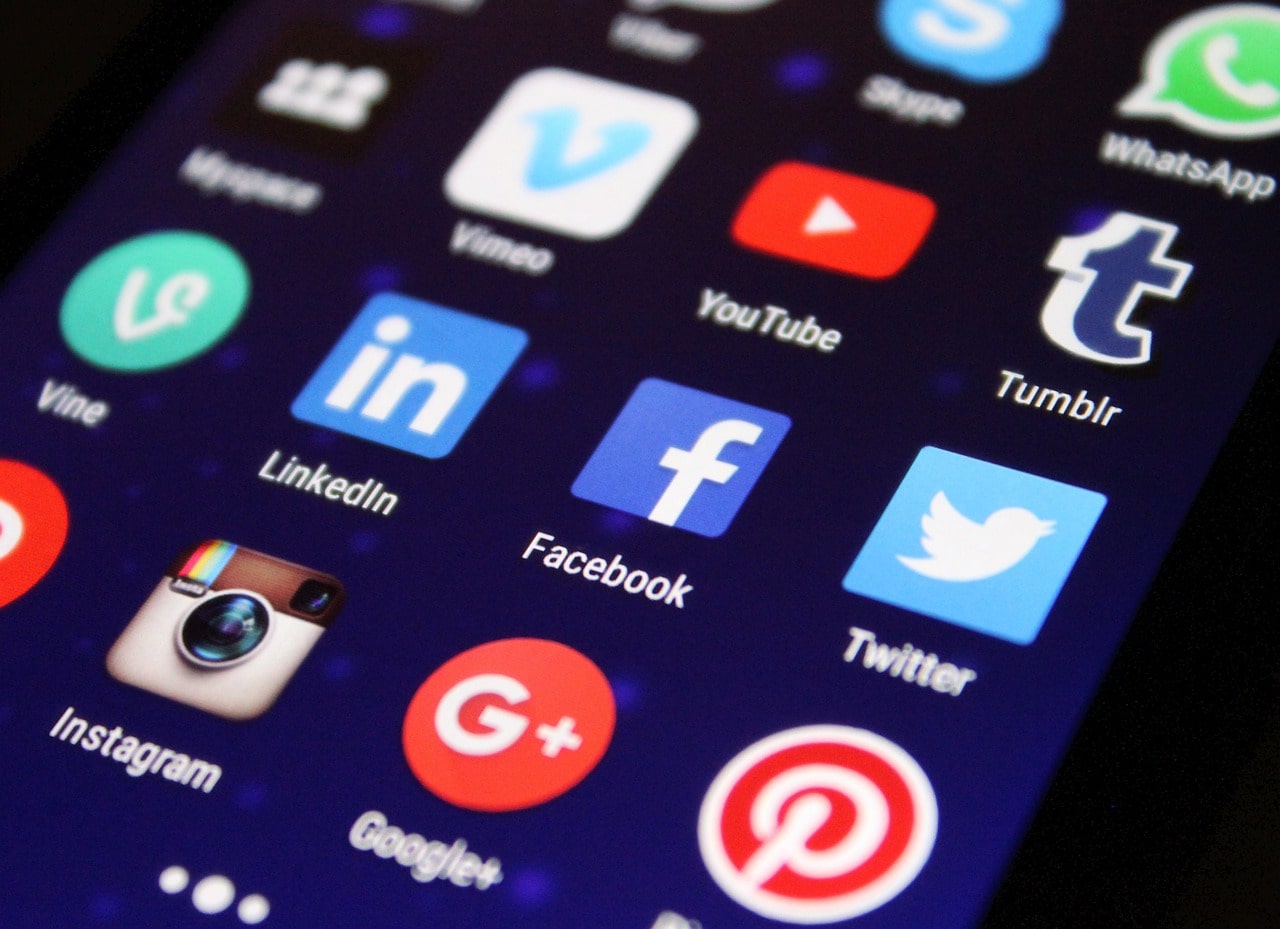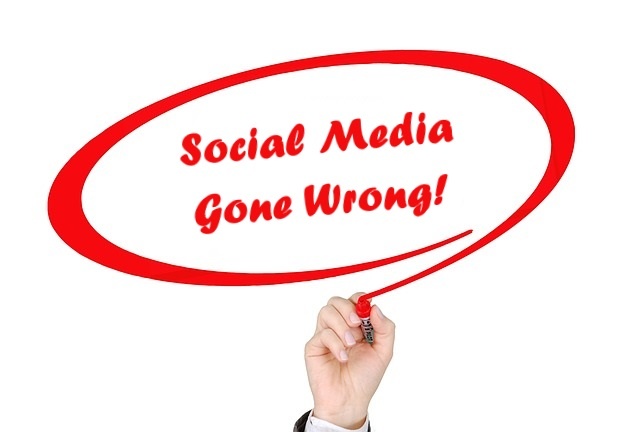5 Ways to Get More B2B Customers Through Social Media Marketing
by Kerry Baker on 11-Oct-2022 13:00:00

Finding B2B customers through social media marketing can be like trying to find the mythical gold at the end of the rainbow.
No matter how much effort businesses pour into creating social media content and trying to engage with contacts, the goal of consistent leads and sales never seems to get any closer.
One of the main reasons is that many B2B businesses focus too heavily on the conversion/lead nurturing side of the social media equation, and not sufficiently on attracting followers. This is like counting the money before you’ve made it.
It’s true that having hundreds of connections on LinkedIn and thousands of followers on Facebook and Twitter doesn’t, on its own, guarantee more sales, but you do need a reasonable follower base for your content marketing and networking efforts to bear fruit.
If you’re struggling to grow your follower base, the following tips will help you to stand out more on social media and cultivate the contacts you need to convert into customers.
1) Use The Right Social Media Networks
Make sure that you’re using the right social media networks. You won’t have time to use them all to their full potential, and you may not need to, in any case, so focus your main efforts on the one or two platforms most used by your target buyers.
Your choice will be influenced by the communication style preferred by your personas and your campaign goals.
- LinkedIn – excellent for B2B lead generation, lead nurturing and professional network building.
- Facebook – customer retention: Facebook is a good platform for long-term interactions with existing customers and partner businesses. Relationships can be built and sustained by sharing content and engaging with content posted by other people.
- Instagram – for brand awareness, showing a human face to your business and helping you cultivate trust through sharing meaningful visual content.
- Twitter – for driving traffic to your website: Twitter is an excellent platform for micro-interactions with prospects and customers, and for real-time communication during campaigns and events.
2) Set Goals
Start with some ambitious but achievable follower-related goals for your chosen social media platform, e.g. 1000 new followers on Facebook, and 200 new LinkedIn connections. These should be aligned with your business goals and revenue targets, so define your KPIs by assessing how many sales you need to meet your revenue objectives, the number of sales-qualified leads (SQLs) you need for each new sale, how many marketing-qualified leads (MQLs) are required for each SQL, and finally, how many social media followers you will need to generate this number of MQLs. Setting social media marketing KPIs encourages a strategic and ROI-focused approach and prevents drift.
3) Provide Relevant Original Content
Social media is one of the best content marketing channels for sharing material published on your company blog or website. However, re-posting links to blogs hosted elsewhere will not, on its own, encourage people to connect with you. Give people an added incentive by publishing original content directly onto the platform. This could be a blog on LinkedIn’s native blog application or an exclusive White Paper available solely through the platform, photos or videos on Instagram, a time-limited special offer for Twitter followers, or a webinar on Facebook. In short, don’t just use your social media platforms to drive traffic to your website or blog – invest in them as a means of generating leads in their own right.
4) Make Your Content More Searchable
Social media is a competitive content platform, so make the most of #hashtags to improve the visibility and searchability of your content to new users.
Hashtags are also a good way of integrating crossover content published on multiple platforms, encouraging two-way engagement between your followers on LinkedIn (for example) and those on Twitter or Facebook. Choose your hashtags carefully. There is a wide range of popular hashtags that may work well for your business, such as #love (the number one most popular Instagram hashtag in 2022!), #marketingmix, #magento etc – but you can also create your own hashtags linked to your target keywords, or hashtags and topics popular with your target followers. Research what hashtags your personas are engaging with at the moment, and those used by your main competitors on social media.
5) Personality Goes A Long Way
Social media is an intrinsically personal and informal content medium, so while there is definitely a place for serious and professional content on social media, don’t be afraid to express your brand personality through your social media interactions. Allow employees who post on behalf of your company to speak with their own ‘voice’ as much as possible, and allow followers to see who you are as a company of human beings, not just a faceless business. This helps build trust and brand engagement among existing followers, and also gives new people a reason to follow you, differentiating your business from its competitors in a way that may not be obvious through your website.
Social Media Marketing Support From JDR
At JDR, we provide a range of social media marketing services to help businesses develop their social media profile, build a strong follower base, and use these digital assets to encourage greater lead generation.
To discuss the right strategy for you and find out more about how we work, please call 01332 343281 today.
Image Source: Pixabay
- Inbound Marketing (SEO, PPC, Social Media, Video) (824)
- Strategy (363)
- Sales & CRM (195)
- Marketing Automation & Email Marketing (190)
- Business Growth (164)
- Website Design (160)
- Hubspot (138)
- Lead Generation (115)
- Google Adwords (98)
- Content Marketing (94)
- Conversion (48)
- Case Studies (47)
- News (47)
- Ecommerce (39)
- Webinars (34)
- SEO (24)
- AI (20)
- Events (19)
- Video (17)
- LinkedIn Advertising (15)
- Video Selling (15)
- Software training (13)
- Niche business marketing (11)
- The Digital Prosperity Podcast (10)
- Facebook Advertising (6)
- HubSpot Case Studies (5)
- December 2025 (10)
- November 2025 (6)
- October 2025 (17)
- September 2025 (16)
- August 2025 (14)
- July 2025 (14)
- June 2025 (5)
- May 2025 (19)
- April 2025 (15)
- March 2025 (13)
- February 2025 (13)
- January 2025 (8)
- December 2024 (2)
- November 2024 (4)
- October 2024 (21)
- September 2024 (4)
- August 2024 (8)
- July 2024 (14)
- June 2024 (16)
- May 2024 (25)
- April 2024 (15)
- March 2024 (18)
- February 2024 (5)
- January 2024 (10)
- December 2023 (6)
- November 2023 (10)
- October 2023 (13)
- September 2023 (12)
- August 2023 (14)
- July 2023 (13)
- June 2023 (14)
- May 2023 (15)
- April 2023 (13)
- March 2023 (14)
- February 2023 (13)
- January 2023 (15)
- December 2022 (13)
- November 2022 (6)
- October 2022 (8)
- September 2022 (22)
- August 2022 (15)
- July 2022 (13)
- June 2022 (16)
- May 2022 (14)
- April 2022 (16)
- March 2022 (17)
- February 2022 (11)
- January 2022 (8)
- December 2021 (6)
- November 2021 (7)
- October 2021 (11)
- September 2021 (10)
- August 2021 (7)
- July 2021 (7)
- June 2021 (4)
- May 2021 (4)
- April 2021 (1)
- March 2021 (3)
- February 2021 (5)
- January 2021 (4)
- December 2020 (7)
- November 2020 (6)
- October 2020 (5)
- September 2020 (9)
- August 2020 (18)
- July 2020 (17)
- June 2020 (17)
- May 2020 (10)
- April 2020 (21)
- March 2020 (24)
- February 2020 (21)
- January 2020 (12)
- December 2019 (23)
- November 2019 (12)
- October 2019 (14)
- September 2019 (16)
- August 2019 (15)
- July 2019 (13)
- June 2019 (6)
- May 2019 (8)
- April 2019 (4)
- March 2019 (2)
- February 2019 (2)
- January 2019 (2)
- December 2018 (3)
- November 2018 (24)
- September 2018 (11)
- August 2018 (9)
- June 2018 (3)
- May 2018 (6)
- April 2018 (14)
- March 2018 (12)
- February 2018 (16)
- January 2018 (15)
- December 2017 (15)
- November 2017 (18)
- October 2017 (23)
- September 2017 (19)
- August 2017 (28)
- July 2017 (27)
- June 2017 (25)
- May 2017 (18)
- April 2017 (17)
- March 2017 (16)
- February 2017 (17)
- January 2017 (14)
- December 2016 (21)
- November 2016 (27)
- October 2016 (25)
- September 2016 (16)
- August 2016 (20)
- July 2016 (19)
- June 2016 (14)
- May 2016 (20)
- April 2016 (24)
- March 2016 (22)
- February 2016 (28)
- January 2016 (27)
- December 2015 (28)
- November 2015 (19)
- October 2015 (9)
- September 2015 (12)
- August 2015 (5)
- July 2015 (1)
- June 2015 (10)
- May 2015 (3)
- April 2015 (11)
- March 2015 (14)
- February 2015 (15)
- January 2015 (12)
- December 2014 (2)
- November 2014 (23)
- October 2014 (2)
- September 2014 (2)
- August 2014 (2)
- July 2014 (2)
- June 2014 (7)
- May 2014 (14)
- April 2014 (14)
- March 2014 (7)
- February 2014 (2)
- January 2014 (7)
- December 2013 (9)
- November 2013 (14)
- October 2013 (17)
- September 2013 (3)
- August 2013 (6)
- July 2013 (8)
- June 2013 (4)
- May 2013 (3)
- April 2013 (6)
- March 2013 (6)
- February 2013 (7)
- January 2013 (5)
- December 2012 (3)
- November 2012 (2)
- September 2012 (1)
Subscribe by email
You May Also Like
These Related Blogs

How To Turn Your Social Media Followers Into Loyal Customers
Pretty much everyone under the age of 60, and to be honest most of those over the age of 60, are active on at least one of the many popular social med …

When Social Media Goes Wrong For Businesses
Social media is a strong lead generation tool for B2B businesses, but is wide open to misuse. Achieving the right balance of content, activity and res …

Instagram Sends Users Into Meltdown After Announcing Their Upcoming Update
Instagram have recently announced on their blog that they are going to be changing the way they show results in user feeds. The Social Media platform …




